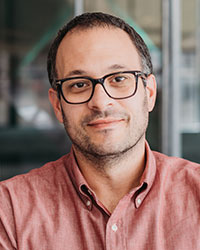Tolga Durak
Lecturer
Founding Director & Principal Investigator, Safety, Health, Environmental Discovery Lab
Managing Director, Environmental, Health & Safety
tdurak@mit.edu
617-253-9492
N52–496

Lecturer
Founding Director & Principal Investigator, Safety, Health, Environmental Discovery Lab
Managing Director, Environmental, Health & Safety
tdurak@mit.edu
617-253-9492
N52–496
As MIT’s Managing Director of Environment, Health and Safety (EHS), Dr. Durak acts as the Senior Institutional Administrator for health, safety and environmental programs. Dr. Durak leads EHS Management System composed of 1000+ professionals with designated responsibilities to assure university activities are conducted in compliance with applicable laws, regulations, best practices in addition to supporting and providing oversight for the development, implementation, and monitoring of prevention control strategies and initiatives for the MIT ecosystem including MIT Nuclear Reactor Lab, Bates Linear Accelerator, Haystack / Millstone Observatory, Lincoln Laboratories, Singapore MIT Alliance for Research and Technology, and affiliate institutions.
Introduces students to the basics of ionizing and non-ionizing radiation; radiation safety and protection; and an overview of the variety of health physics applications, especially as it pertains to the medical field and to radioactive materials research in academia. Presents basic physics of ionizing and non-ionizing radiation, known effects of the human body, and the techniques to measure those effects. Common radiation-based medical imaging techniques and therapies discussed. Projects, demonstrations, and experiments introduce students to standard techniques and practices in typical medical and MIT research lab environments where radiation is used. Subject can count toward the 6-unit discovery-focused credit limit for first-year students. Limited to 10. Preference to first-year students.